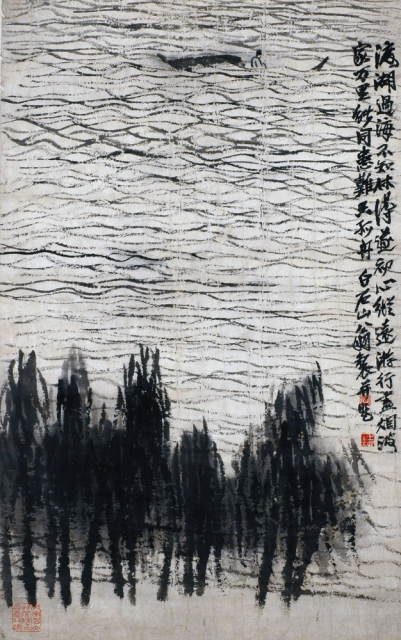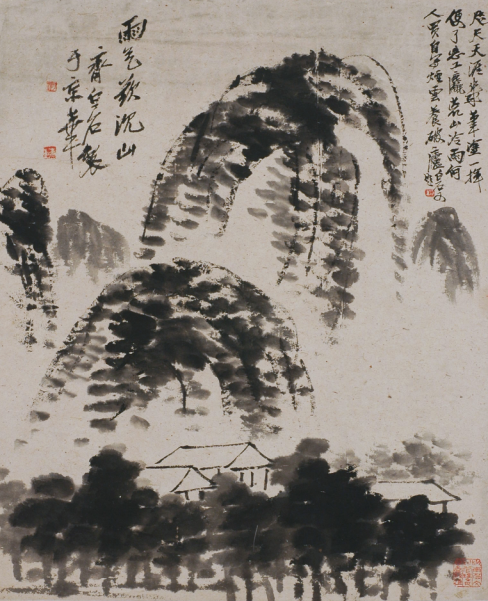Hanging Scroll of a Single Boat on the Sea by Qi Baishi

Paper hanging scroll
Height: 67.8cm; Length: 42.1cm
This artwork was created by Qi Baishi (given name Huang, style name Binsheng and literary name Baishi), who was a native of Xiangtan City, Hunan Province. As chairman of the China Artists’ Association, he was a distinguished artist in terms of poetry, calligraphy, painting and seal carving.
Depicted in this painting was a single boat floating on the vast expanse of misty, rolling sea, with thick woods on the bank. By selecting, processing and transforming the objective images and imbuing them with his own aesthetic values, Qi Baishi turned the objective material image into a subjective artistic image which invokes the viewers’ imaginations once upon they see it. That may be the reason why although simply structured and lightly colored, this painting conveys to us a sense of confusion but conviction and is full of artistic beauty.
A Poem was written on the right edge of the painting, which not only helps viewers to develop a feeling from the painting and acts as a guide to understand the painter’s philosophies towards life, but also reflects a high calligraphic value and literary cultivation of the painter. In addition, three seal prints can be seen on this painting.
We can see from this artwork that the Chinese painting is mainly a linear art, and the painter uses Chinese brushes, ink, paper and special watercolors. A Chinese painter must be poetic and skillful in applying the brush and ink to create not only images but artistic conception.
深入探索
Chinese Traditional Paintings: Unity of Poetry, Calligraphy, Seal and Painting
Chinese painting combines poetry, calligraphy, painting and seal-cutting to compose a stylized form of art. With all these elements, a traditional Chinese painting can fully display the artistic character of the painter, and provide much more aesthetic value.
Before Song Dynasty, Chinese painters rarely made any inscriptions on their works except for signing their names in a corner in some cases. Later, some painters, who were also poets and calligraphers, wrote an inscription or a poem on their works to explain the theme or express their emotions. And in Yuan Dynasty, seals were stamped on paintings. By that time, all the four artistic elements had been combined in one form.
A pictorial work is direct and concrete but confined to a certain time and space. In contrast, unlimited by such constraints, a poem can describe things in different times and places and their developments to contain much greater content than the pictorial work. By combining a poem with a painting, the static painting becomes dynamic and more inclusive, and the poem also becomes more vivid-they are mutually complementary. The red impression of a seal can effectively add more color to a painting and make it livelier. (Edited from Confucius Institute Online)




